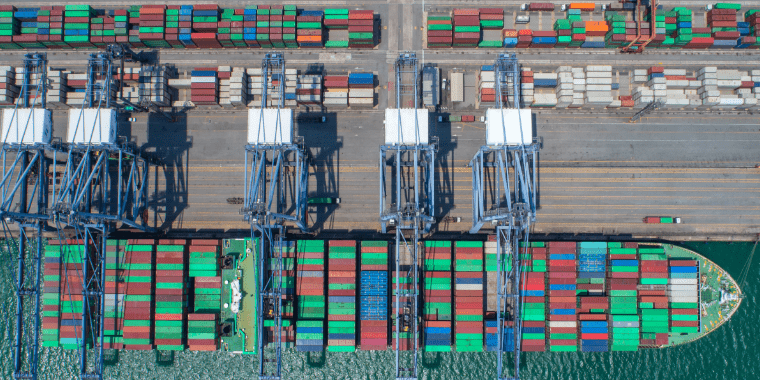May 23, 2017 Matthew Wittemeier
ShareLast week we explored automation, the key trend at this year’s German American Chamber of Commerce’s Business Conference, World Port Development's Port and Terminal Technology Conference, Port Technolgy International's Container Terminal Automation Conference, and TOC Asia 2017. In part 2, we pick up where we left off and look at a few other interesting topics that may impact terminal operations in the future.
Mega Ships, Transshipment Hubs and Shorter Shipping Routes
In general terms, there were broader topics at individual conferences that are worth noting, including: mega ship infrastructure investments, transshipment “hub” ports, and decreasing shipping distances. Interesting, each of these topics are interrelated and build on each other.
Mega ships have been topical for some time now. What was new at these conferences was a view that not all ports should invest in mega ship infrastructure. It is expensive to upgrade a port to service mega ships. As one delegate put it, you can win big, but, you can also lose big. Increasingly, ports are discussing the downsides to investing in infrastructure designed to service mega ships.
This flows into the emergence of transshipment hubs. It is forecasted that the port industry is going to transition from a point-to-point shipping model to a hub model, where there are only a few major ports servicing mega ships. These hubs will be characterized by a high level of inland connectedness and be capable of servicing all types of vessels. Shippers will use competitive models and software that calculates the least expensive option to ship a container from point A to point Z. Just because point Y is closer to point Z, doesn’t guarantee that this will be the shipping option selected, as point M with rail transfer to point Z might be a better financial proposition for the shipper.
Finally, the Fourth Industrial Revolution is positioned to transform the manufacturing economies of the world. For the first time in modern history, we are likely to see a return of manufacturing to developed economies. Given that the cost in automated manufacturing technologies is so high, companies are going to want to invest in these technologies where there are stable economies and governments in place. After all, you wouldn’t want to have invested hundreds of millions of dollars in a plant just to have a foreign government seize it. This will lead to an increased need for hinterland connections in developed nations – it will also lead to shorter shipping routes for some goods.
Speaking of the Future
We'd be remiss if we didn't highlight some of the interesting predictions that were presented.. Each conference brought its own individual ideas for the future, whether it be smart ports, reverse container stacking, the Fourth Industrial Revolution, Hyperloop One, or how an Airbnb or Uber-style disruptive technology is imminent in the terminal industry. These lines of thinking challenge the industry's status quo while also offering participants the ability to escape the daily grind of operations; if only for 20 or 30 minutes at a time. At the core of all of these ideas is technology. And, not just any technology... you guessed it, automated technology.
Smart ports focused on how the terminals of the future will be hyper-connected environments comprised of devices that all communicate with each other, sharing data in real-time; simultaneously improving knowledge, understanding, and productivity. In other words, it is “big data” combined with the Internet of Things (IoT). Either way you explain it, smart ports will play a central role in the success of terminal automation in the future.
The futuristic reverse container stacking concept by Navnautik relies entirely on "Autonomous Container Transporter's (ACT)" that replace all traditional yard equipment. The concept explores how stacking containers into silo-like vertical chutes improves space utilization. As a new concept, it is out there; that said, Navnautik’s science behind it does seem interesting and worth a look.
The Fourth Industrial Revolution, sometimes called "Industry 4.0" or "The Digital Industrial Revolution" is centered on how technology, specifically, automation through robots and artificial intelligence, will transform the world on a scale humans have never experienced before. While the jury is still out on whether this will be a good thing or not for humans, you can't argue against the fact that this topic is emerging as another big driver to port automation; watch this space.
Furthermore, the industry simply can’t ignore Hyperloop One. It promises to redefine the way people and goods (in our case goods) are moved. By offering the speed of air transportation at the cost of ground, it is poised to revolutionize the shipping industry. So much so, that DP World is a key investor and partner in the project, and sits on the board of directors for the company. That said, while the Hyperloop One team has grown from a small team working out of a LA garage in 2014 to a 200 strong team making steady headway, they are still some 4 years away from it being operational with a goal of opening in 2021.
Finally, disruptive "crowdsourced" technology innovations like Airbnb and Uber have been popping up in almost every industry from hotels and taxi transport, through to banking services. While no one presented a specific example of how a technology like this could establish itself in the port terminal space, as an industry, there was a consensus that ignoring it as a potential challenge isn't a proactive approach.
A Plug for Technology
All-in-all, technology is, and will, play a central role in how terminals grow and move forward into the future. Listening to the conversations held between sessions and speaking with delegates, you get a strong impression that terminals are embracing technology as a means to move their operations forward. Instead of traditional investment models centered on tangible assets, ports are seeing the benefits that software investments will deliver.
What do you think are the most important factors impacting container terminals today? What role will technology play in the future of container terminals?
About our Expert

Matthew Wittemeier
Matthew Wittemeier is the Director of Strategy for INFORM ANZ, having previously served as Director of Marketing and Strategy for INFORM’s Terminal & Distribution Center Logistics Division. In this role, he became a thought-provoking contributor to many industry publications and conferences. He’s also co-author of the award-winning 2038: A Smart Port Story—a story about the future of technology and the social challenges it may bring.


